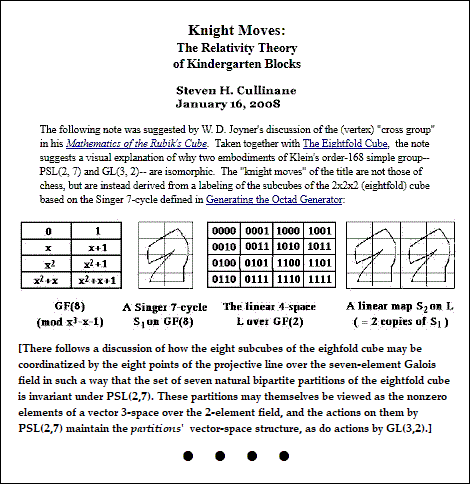Wednesday, July 6, 2022
Geometry for the Turtle Clan
Friday, May 27, 2022
Plan 9 from Disney
"With the Tablet of Ahkmenrah and the Cube of Rubik,
my power will know no bounds!"
— Kahmunrah in a novelization of Night at the Museum:
Battle of the Smithsonian , Barron's Educational Series
Scholium —
Abstracting from narrative to structure, and from structure
to pure number, the Tablet of Ahkmenrah represents the
number 9 and the Cube of Rubik represents the number 27.
Returning from pure abstract numbers to concrete representations,
9 yields the structures in Log24 posts tagged Triangle.graphics,
and 27 yields a Galois cube .
Sunday, May 22, 2022
Monday, May 16, 2022
Sketch for a Magic Triangle

Updates from later the same day —
Related affine structures —
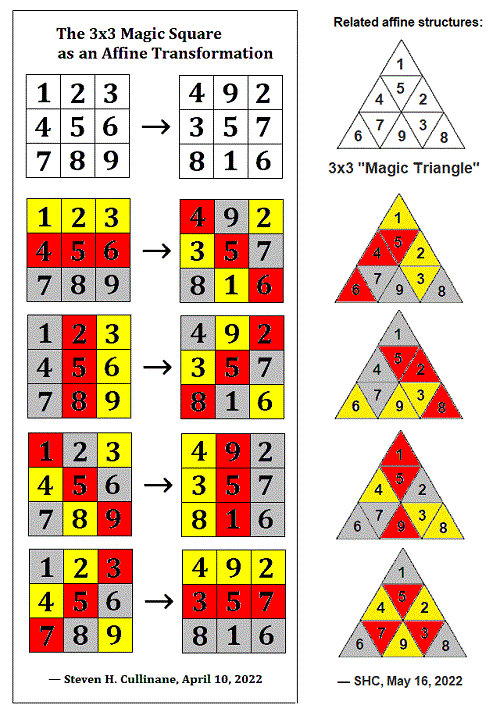
See also "Square+Triangles" in this journal.
The fishlike shapes within three of the above
ninefold colored triangles suggest some . . .
Related Entertainment —
Sunday, May 1, 2022
Jailbait Puzzle for Moon Knight


The pane number of interest — 15 or 14 ? —
depends on your perspective.
Related cinematic art of Oscar Isaac —

Sunday, April 10, 2022
Munro Doctrines
The previous post was in memory of one Eleanor Munro.
A different literary Munro —
And then there is Hector Hugh Munro, pen name Saki . . .
See lumber room in this journal (Nov. 30 – Dec. 3, 2016), and
later Ghost Ship tales in a post of December 22, 2016.
Saturday, March 26, 2022
Box Geometry: Space, Group, Art (Work in Progress)
| Name Tag | .Space | .Group | .Art |
|---|---|---|---|
| Box4 |
2×2 square representing the four-point finite affine geometry AG(2,2). (Box4.space) |
S4 = AGL(2,2) (Box4.group) |
(Box4.art) |
| Box6 |
3×2 (3-row, 2-column) rectangular array representing the elements of an arbitrary 6-set. |
S6 | |
| Box8 | 2x2x2 cube or 4×2 (4-row, 2-column) array. | S8 or A8 or AGL(3,2) of order 1344, or GL(3,2) of order 168 | |
| Box9 | The 3×3 square. | AGL(2,3) or GL(2,3) | |
| Box12 | The 12 edges of a cube, or a 4×3 array for picturing the actions of the Mathieu group M12. | Symmetries of the cube or elements of the group M12 | |
| Box13 | The 13 symmetry axes of the cube. | Symmetries of the cube. | |
| Box15 |
The 15 points of PG(3,2), the projective geometry of 3 dimensions over the 2-element Galois field. |
Collineations of PG(3,2) | |
| Box16 |
The 16 points of AG(4,2), the affine geometry of 4 dimensions over the 2-element Galois field. |
AGL(4,2), the affine group of |
|
| Box20 | The configuration representing Desargues's theorem. | ||
| Box21 | The 21 points and 21 lines of PG(2,4). | ||
| Box24 | The 24 points of the Steiner system S(5, 8, 24). | ||
| Box25 | A 5×5 array representing PG(2,5). | ||
| Box27 |
The 3-dimensional Galois affine space over the 3-element Galois field GF(3). |
||
| Box28 | The 28 bitangents of a plane quartic curve. | ||
| Box32 |
Pair of 4×4 arrays representing orthogonal Latin squares. |
Used to represent elements of AGL(4,2) |
|
| Box35 |
A 5-row-by-7-column array representing the 35 lines in the finite projective space PG(3,2) |
PGL(3,2), order 20,160 | |
| Box36 | Eurler's 36-officer problem. | ||
| Box45 | The 45 Pascal points of the Pascal configuration. | ||
| Box48 | The 48 elements of the group AGL(2,3). | AGL(2,3). | |
| Box56 |
The 56 three-sets within an 8-set or |
||
| Box60 | The Klein configuration. | ||
| Box64 | Solomon's cube. |
— Steven H. Cullinane, March 26-27, 2022
Friday, March 18, 2022
Architectural Review
|
"Poincaré said that science is no more a collection of facts than a house is a collection of bricks. The facts have to be ordered or structured, they have to fit a theory, a construct (often mathematical) in the human mind. … Mathematics may be art, but to the general public it is a black art, more akin to magic and mystery. This presents a constant challenge to the mathematical community: to explain how art fits into our subject and what we mean by beauty. In attempting to bridge this divide I have always found that architecture is the best of the arts to compare with mathematics. The analogy between the two subjects is not hard to describe and enables abstract ideas to be exemplified by bricks and mortar, in the spirit of the Poincaré quotation I used earlier."
— Sir Michael Atiyah, "The Art of Mathematics" |
|
Gottschalk Review —
W. H. Gottschalk and G. A. Hedlund, Topological Dynamics, The ending of the review — The most striking virtue of the book is its organization. The authors' effort to arrange the exposition in an efficient order, and to group the results together around a few central topics, was completely successful; they deserve to be congratulated on a spectacular piece of workmanship. The results are stated at the level of greatest available generality, and the proofs are short and neat; there is no unnecessary verbiage. The authors have, also, a real flair for the "right" generalization; their definitions of periodicity and almost periodicity, for instance, are very elegant and even shed some light on the classical concepts of the same name. The same is true of their definition of a syndetic set, which specializes, in case the group is the real line, to Bohr's concept of a relatively dense set. The chief fault of the book is its style. The presentation is in the brutal Landau manner, definition, theorem, proof, and remark following each other in relentless succession. The omission of unnecessary verbiage is carried to the extent that no motivation is given for the concepts and the theorems, and there is a paucity of illuminating examples. The striving for generality (which, for instance, has caused the authors to treat uniform spaces instead of metric spaces whenever possible) does not make for easy reading. The same is true of the striving for brevity; the shortest proof of a theorem is not always the most perspicuous one. There are too many definitions, especially in the first third of the book; the reader must at all times keep at his finger tips a disconcerting array of technical terminology. The learning of this terminology is made harder by the authors' frequent use of multiple statements, such as: "The term {asymptotic } {doubly asymptotic } means negatively {or} {and} positively asymptotic." Conclusion: the book is a mine of information, but you sure have to dig for it. — PAUL R. HALMOS |
Saturday, March 12, 2022
Geometric Theology: Logos vs. Antilogos
In a 1999 Yale doctoral dissertation,
"Diabolical Structures in the Poetics of Nikolai Gogol,"
the term "antilogos" occurs 70 times.
Students of poetic structures may compare and contrast . . .
Logos
Antilogos

Thursday, March 10, 2022
Diabolical Poetics
The title of the previous post suggests a search for
Shubnikov in this journal. That search yields a 1999
Yale doctoral dissertation,
"Diabolical Structures in the Poetics of Nikolai Gogol."
A related image:
From "Made for Love" (2021) — Lyle Herringbone:

Tuesday, February 1, 2022
Monday, January 24, 2022
Show and Tell in the Heart Sutra
Sunday, January 23, 2022
Thursday, January 20, 2022
New-Age Trinity
"Taken together, vibe, mood, and energy formed
something like a loose philosophical system.
They presented the world as a swirl of forces
that eluded capture in rational thought, but that
could nevertheless be acutely sensed and even
influenced with the right kind of effort."
— Mitch Therieau in The Drift , Jan. 19, 2022 —
https://www.thedriftmag.com/vibe-mood-energy/ .
See as well Pacific Rimming and Black Sparrow.
Related cinematic lore:
Cailee Spaeny and The Drift in "Pacific Rim: Uprising," as well as . . .

Related tune: "Gimme the Beat Boys."
________________________________________________________
Update of 4:16 PM ET Friday, Jan. 21, 2021 —
From https://dash.harvard.edu/
bitstream/handle/1/39988028/
GRIETZER-DISSERTATION-2017.pdf —
Ambient Meaning: Mood, Vibe, System
A dissertation presented by Peli Grietzer
to The Department of Comparative Literature
in partial fulfillment of the requirements for
the degree of Doctor of Philosophy in
the subject of Comparative Literature,
Harvard University, Cambridge, Massachusetts,
November 2017 —
[Edited to emphasize key notions]
"On the picture that I am suggesting, there exists a reciprocity between
the structure of our sensibility or sensible cognition (system),
the structure of our affective life or social experience (mood),
and the structure of our social-material performance or production (style/vibe)
— a reciprocity whose approximate equilibrium or ‘metastable state’ binds
the cognitive, affective, and material aspects of life into a coherent lifeworld
or ‘totality.’ One way to tell the story of this reciprocity is as follows. The system
of our sensibility—our faculty of sensuous cognition that discloses objects, properties,
and patterns—recapitulates the structure of the social-material world. We continuously
calibrate our sensibility by attuning it to our social-material world’s dominant patterns
and forms, adapting our powers of apperception to the task of navigating our
social-material world." (Pp. 145-146.)
Compare and contrast the following trinities:
Related tune — Meat Loaf at the Ryman, "Two out of three ain't bad."
Sunday, January 2, 2022
Annals of Modernism: UR–Grid
The above New Yorker art illustrates the 2×4 structure of
an octad in the Miracle Octad Generator of R. T. Curtis.
Enthusiasts of simplicity may note how properties of this eight-cell
2×4 grid are related to those of the smaller six-cell 3×2 grid:
See Nocciolo in this journal and . . .

Further reading on the six-set – eight-set relationship:
Saturday, January 1, 2022
Clean Lines
Friday, December 31, 2021
Aesthetics in Academia
Related art — The non-Rubik 3x3x3 cube —
The above structure illustrates the affine space of three dimensions
over the three-element finite (i.e., Galois) field, GF(3). Enthusiasts
of Judith Brown's nihilistic philosophy may note the "radiance" of the
13 axes of symmetry within the "central, structuring" subcube.
I prefer the radiance (in the sense of Aquinas) of the central, structuring
eightfold cube at the center of the affine space of six dimensions over
the two-element field GF(2).
Saturday, December 11, 2021
News for Enthusiasts
"Enthusiasts of group theory or incidence structures may enjoy reading about Tits'
work, such as Tits buildings, the Tits alternative, the Tits group, and the Tits metric."
— Annie Rauwerda, Boing Boing reporter. See also Tits in this journal.
Friday, December 3, 2021
Art Memorial
Tuesday, November 23, 2021
Marcela Continues My Education
Marcela . . .
Continues . . .
My Education . . .

Art candle by Camille Vivier that
suggests the title Waxing Roth
(with apologies to Groucho, who
would likely not recommend most
of the other @structuredmag posts.)
The candle's actual title is lovers.
Tuesday, September 7, 2021
Raiders of the Lost Symbol … Continues*
A Log24 search for "Watercourse" leads to . . .
("Watercourse" is in the Customer review link.)
The "five years ago" link leads to . . .
|
"What modern painters are trying to do,
— James J. Gibson in Leonardo An example of invariant structure:
The three line diagrams above result from the three partitions, into pairs of 2-element sets, of the 4-element set from which the entries of the bottom colored figure are drawn. Taken as a set, these three line diagrams describe the structure of the bottom colored figure. After coordinatizing the figure in a suitable manner, we find that this set of three line diagrams is invariant under the group of 16 binary translations acting on the colored figure. A more remarkable invariance — that of symmetry itself — is observed if we arbitrarily and repeatedly permute rows and/or columns and/or 2×2 quadrants of the colored figure above. Each resulting figure has some ordinary or color-interchange symmetry. This sort of mathematics illustrates the invisible "form" or "idea" behind the visible two-color pattern. Hence it exemplifies, in a way, the conflict described by Plato between those who say that "real existence belongs only to that which can be handled" and those who say that "true reality consists in certain intelligible and bodiless forms." |
* See that title in this journal.
Tuesday, August 10, 2021
Discursive
The structure in the previous post (three trios), though historically significant,
offers less opportunity for contrapuntal variation than . . .
Related remarks for Pleasantly Discursive Day —

Monday, August 9, 2021
Friday, July 30, 2021
Central Objects
Wednesday, July 28, 2021
From the Krell Lab
“… Which makes it a gilt-edged priority that one of us
gets into that Krell lab and takes that brain boost.”
— American adaptation of Shakespeare’s Tempest , 1956
|
“Propriation1 gathers the rift-design2 of the saying
— p. 415 of Heidegger‘s Basic Writings ,
“Das Ereignis versammelt den Aufriß der Sage — Heidegger, Weg zur Sprache 1. “Mirror-Play of the Fourfold” |
Tuesday, July 27, 2021
Dancing in the Moonlight

Instagram screenshot with added note.
Easy E for an Accountant:

Not So Easy: E-Operators
"A great many other properties of E-operators
have been found, which I have not space
to examine in detail."
— Sir Arthur Eddington, New Pathways in Science ,
Cambridge University Press, 1935, page 271.
(This book also presents Eddington's unfortunate
speculations on the fine-structure constant.)
Update of 4:04 AM ET:
Here is the not-so-tiny-dancer in
the above Instagram screenshot.
Tuesday, May 18, 2021
Nelson’s Monument
See as well . . .
http://cs.brown.edu/memex/ACM_HypertextTestbed/papers/64.html .
This post was suggested by an Arts & Letters Daily link today to . . .
https://placesjournal.org/article/
the-filing-cabinet-and-20th-century-information-infrastructure/ .
A particularly notable filing cabinet:
Friday, March 26, 2021
ABC Art
Some images from Feb. 5, 2021, in a search for "ABC Art" —
A colored version using CSS —

See https://codepen.io/m759/pen/wvoGwzx .
“Somehow, a message had been lost on me. Groups act .
The elements of a group do not have to just sit there,
abstract and implacable; they can do things, they can
‘produce changes.’ In particular, groups arise
naturally as the symmetries of a set with structure.”
— Thomas W. Tucker, review of Lyndon’s Groups and Geometry
in The American Mathematical Monthly , Vol. 94, No. 4
(April 1987), pp. 392-394.
Friday, March 19, 2021
Eye of Cat
|
Changing Woman: “Kaleidoscope turning…
Shifting pattern — Roger Zelazny, Eye of Cat |
Monday, March 15, 2021
The Abstract Signature
Caption: "I notice the signatures are never abstract." —

Abstract Art

Abstract Signature
Thursday, March 11, 2021
General Terms
"The puzzle in general terms is one of structure ."
— J. Robert Oppenheimer, page 122,
Life Magazine , Oct. 10, 1949
The term "puzzle" may be misleading.
A more serious structure —
Click the above images for further details.
Thursday, March 4, 2021
Continuity

Actually, Dirac “bridged math and physics” much earlier —
“Spinors, which are a kind of square root of vectors, had been introduced
in algebra and also in physics as part of Paul Dirac’s theory of the electron.
A spin structure on a manifold allows such square roots to exist.”
— Quanta Magazine today, article by Daniel S. Freed
See The Eddington Song and . . .
Poetic paraphrase —
“How can we tell the singer from the song?”
Saturday, February 27, 2021
The Pencil Case

Clue
Here is a midrash on “desmic,” a term derived from the Greek desmé
( δέσμη: bundle, sheaf , or, in the mathematical sense, pencil —
French faisceau ), which is related to the term desmos , bond …
(The term “desmic,” as noted earlier, is relevant to the structure of
Heidegger’s Sternwürfel .)
“Gadzooks, I’ve done it again!” — Sherlock Hemlock
Wednesday, February 24, 2021
Annals of Dim Antiquity
“Twenty-four glyphs, each one representing not a letter, not a word,
but a concept, arranged into four groups, written in Boris’s own hand,
an artifact that seemed to have resurrected him from the dead. It was
as if he were sitting across from Bourne now, in the dim antiquity of
the museum library.
This was what Bourne was staring at now, written on the unfolded
bit of onionskin.”
— The Bourne Enigma , published on June 21, 2016
Passing, on June 21, 2016, into a higher dimension —
For those who prefer Borges to Bourne —
Wednesday, January 27, 2021
Game of Royalties
For Holocaust Remembrance Day —

Little reportedly died at 79 on Jan. 7.
“Mr. Little submitted the manuscript for ‘Harry Potter and the Philosopher’s Stone’
to 12 publishers. He received 12 rejections in response, before selling it for £2,500,
or about $3,400 (the equivalent of about $5,800 today). It was a meager amount,
but his genius was in the details: He sold only the rights to publish it in Britain and
the Commonwealth, and he asked for high royalties.” — Clay Risen, New York Times
Leachman reportedly died at 94 today.
Dr. Frederick Frankenstein : And it was you… who left my grandfather’s
book out for me to find.
Frau Blücher : Yes.
Dr. Frederick Frankenstein : So that I would…
Frau Blücher : Yes.
Dr. Frederick Frankenstein : Then you and Victor were…
Frau Blücher : YES. YES. Say it. He vas my… BOYFRIEND!
In the spirit of Kinbote…
The real Frau Blücher was of course Hannah Arendt,
whose boyfriend was Martin Heidegger.
Cf. a Log24 post of April 10, 2017 —
| From “Heidegger for Passover”
“Propriation1 gathers the rift-design2 of the saying — p. 415 of Heidegger‘s Basic Writings , “Das Ereignis versammelt den Aufriß der Sage — Heidegger, Weg zur Sprache 1. “Mirror-Play of the Fourfold” |
Wednesday, January 13, 2021
Revision
From a post of January 8, 2021 —
“Somehow, a message had been lost on me. Groups act .
The elements of a group do not have to just sit there,
abstract and implacable; they can do things, they can
‘produce changes.’ In particular, groups arise
naturally as the symmetries of a set with structure.”
— Thomas W. Tucker, review of Lyndon’s Groups and Geometry
in The American Mathematical Monthly , Vol. 94, No. 4
(April 1987), pp. 392-394.
Note:
The phrase “the subgroup V” here refers, confusingly, to the translation
subgroup derived from a vector space V.
Saturday, January 9, 2021
A Sense
“In a sense, we would see that change arises from
the structure of the object.”
— Nima Arkani-Hamed, quoted in
“A Jewel at the Heart of Quantum Physics,”
by Natalie Wolchover, Quanta Magazine , Sept. 17, 2013.

For those who prefer less barbaric entertainment —
Friday, January 8, 2021
Groups Act
“Somehow, a message had been lost on me. Groups act .
The elements of a group do not have to just sit there,
abstract and implacable; they can do things, they can
‘produce changes.’ In particular, groups arise
naturally as the symmetries of a set with structure.”
— Thomas W. Tucker, review of Lyndon’s Groups and Geometry
in The American Mathematical Monthly , Vol. 94, No. 4
(April 1987), pp. 392-394.
“The concept of group actions is very useful in the study of
isomorphisms of combinatorial structures.”
— Olli Pottonen, “Classification of Steiner Quadruple Systems”
(Master’s thesis, Helsinki, 2005, p. 48).
“In a sense, we would see that change arises from
the structure of the object.”
— Nima Arkani-Hamed, quoted in “A Jewel at the Heart of
Quantum Physics,” by Natalie Wolchover, Quanta Magazine ,
Sept. 17, 2013.
See as well “Change Arises” in this journal.
Monday, December 28, 2020
Theology for the Wiener Kreis
The previous post suggests a look at The New Yorker today —
Another “core claim” —
“Change arises from the structure of the object.“
See also Wiener Kreis and Schlick.
Thursday, December 24, 2020
Change Arises
See posts so tagged.
“Change arises from the structure of the object.” — Arkani-Hamed
Related material from 1936 —
Related material from 1905, with the “object” a 4×4 array —

Related material from 1976, with the “object”
a 4×6 array — See Curtis.
Related material from 2018, with the “object”
a cuboctahedron — See Aitchison.
Thursday, November 19, 2020
Set Design and the Schoolgirl Problem
Wednesday, September 23, 2020
Recently Acquired Kindle Books

Related Log24 remarks:
Yoda Quilts and posts now tagged Central Myth.
Related remarks elsewhere:
“In The Uncanny Nicholas Royle defined Freud’s Unheimlichkeit
and the experience of an ‘unreal reality’ as ‘another thinking of
beginning’. But if we are to take him at his word, ‘the beginning
is already haunted’ and we may wish to interpret his debut novel
Quilt as spectrally haunted by the critic’s earlier theory. The essay,
which is structured telephonically, since it refers both to Royle’s
view of literature as telepathy (i.e. another form of ‘tele-‘) and the
beginning of the novel, reads Quilt from its ‘Afterward’, to unveil
two main ghosts haunting Royle’s novel: that of Jacques Derrida
and that of James Joyce.”
—Arleen Ionescu, abstract of a 2013 essay on Royle’s Quilt .
Friday, September 18, 2020
Adoration of the Cube
“WHEN I IMAGINE THE CUBE, I see a structure in motion.
I see the framework of its edges, its corners, and its flexible joints,
and the continuous transformations in front of me (before you start
to worry, I assure you that I can freeze it anytime I like). I don’t see
a static object but a system of dynamic relations. In fact, this is only
half of that system. The other half is the person who handles it.
Just like everything else in our world, a system is defined by
its place within a network of relations—to humans, first of all.”
— Rubik, Erno. Cubed (p. 165). Flatiron Books. Kindle Ed., 2020.
Compare and contrast — Adoration of the Blessed Sacrament.
Monday, September 7, 2020
A Discovery of Species
From the subtitles to “A Discovery of Witches,”
Season 1, Episode 2 —
An actor playing a contemporary (2018) fictional Oxford professor —
378
00:35:54,235 –> 00:35:56,593
We’re among hundreds of laboratories
using genetics
379
00:35:56,595 –> 00:35:59,713
to study species origin,
but in our lab
380
00:35:59,715 –> 00:36:02,315
humans aren’t the only species
we’re studying.
An earlier non-fictional Oxford student writes —

Related material: Other posts tagged Structure and Mutability.
Thursday, July 30, 2020
A Picture Show for Quanta Magazine
An article yesterday at Quanta Magazine suggests a review . . .
From Diamond Theorem images at Pinterest —

Some background —
Wednesday, July 29, 2020
Duren, Not Durin
A flashback from Log24 posts of July 9-11, 2020,
now tagged Structure and Mutability —
For such temptation, see
Dwarves named “Durin.”
Tuesday, July 28, 2020
Friday, July 17, 2020
The Resurrection Artifact
From Log24 posts tagged Structure and Mutability —
“… an artifact that seemed to have resurrected him from the dead.”
— “Robert Ludlum’s” The Bourne Enigma , published on June 21, 2016
See as well the 2020 film Archive , and the related 2018 film Replicas
in Oslo Variations.
Poetic as Well as Prosaic
Prosaic —
Poetic —
Prosaic —
“These devices may have some
theoretical as well as practical value.“
Poetic —
Wednesday, July 15, 2020
Category Theory
A related quotation:
“By far the most important structure in design theory
is the Steiner system S(5, 8, 24).”
— “Block Designs,” by Andries E. Brouwer
(Ch. 14 (pp. 693-746) of Handbook of Combinatorics,
Vol. I, MIT Press, 1995, edited by Ronald L. Graham,
Martin Grötschel, and László Lovász, Section 16 (p. 716))
See also the webpage Block Designs in Art and Mathematics
and Log24 posts tagged Plastic Elements.
Saturday, July 11, 2020
Philosophy for Murdoch Fans
The previous post contained a passage from Iris Murdoch’s
1961 essay “Against Dryness.” Some related philosophy —
For those who prefer pure mathematics to philosophical ruminations
there are some relevant remarks in my webpage of August 27, 2003.
Thursday, July 9, 2020
The Enigma Glyphs

For those who prefer fiction —
“Twenty-four glyphs, each one representing not a letter, not a word,
but a concept, arranged into four groups, written in Boris’s own hand,
an artifact that seemed to have resurrected him from the dead. It was
as if he were sitting across from Bourne now, in the dim antiquity of
the museum library.
This was what Bourne was staring at now, written on the unfolded
bit of onionskin.”
— “Robert Ludlum’s” The Bourne Enigma , published on June 21, 2016
Passing, on June 21, 2016, into a higher dimension —
Monday, June 15, 2020
“The Thing and I” Continues*
“For the first thirty years of its history, Columbia was known as King’s College.”
— History of the University Identity
Hence the crown favicon—

“When people talk about the importance of the study of ‘symmetry’
in mathematics, physics, and elsewhere, they often make the mistake
of only paying attention to the symmetry groups. The structure you
actually have is not just a group (the abstract ‘symmetries’), but an
action of that group on some other object, the thing that has symmetries.”
— Peter Woit of Columbia on June 9, reviewing a Quanta Magazine article
* From earlier posts in this journal containing the title phrase.
Tuesday, June 2, 2020
Monday, May 25, 2020
Cyberface
(A sequel to D8ing the Joystick)
Adam Gopnik today in The New Yorker —
“In remote therapy sessions, with the loss of familiarly structured
therapeutic spaces, a kind of staring contest takes place.”
This journal on the above YouTube date — May 28, 2011 —
“Two things of opposite natures seem to depend
On one another, as a man depends
On a woman, day on night, the imagined
On the real. This is the origin of change.
Winter and spring, cold copulars, embrace
And forth the particulars of rapture come.”
— Wallace Stevens,
“Notes Toward a Supreme Fiction,”
Canto IV of “It Must Change”
Update of 5:45 PM ET —
The above May 28, 2011, Stevens quotation is from a post
titled “Savage Detectives.” A related image starring Sean Young —

Wednesday, May 20, 2020
Scholarly History
On “emergence, institutionalization and (importantly) legitimation …
(with its resource allocation system and authority structure)” —
“It’s still the same old story.” — Song lyric
See as well other posts now tagged Raiding Minsky’s.
Monday, April 27, 2020
The Cracked Nut
“At that instant he saw, in one blaze of light, an image of unutterable
conviction, the reason why the artist works and lives and has his being –
the reward he seeks –the only reward he really cares about, without which
there is nothing. It is to snare the spirits of mankind in nets of magic,
to make his life prevail through his creation, to wreak the vision of his life,
the rude and painful substance of his own experience, into the congruence
of blazing and enchanted images that are themselves the core of life, the
essential pattern whence all other things proceed, the kernel of eternity.”
— Thomas Wolfe, Of Time and the River
“… the stabiliser of an octad preserves the affine space structure on its
complement, and (from the construction) induces AGL(4,2) on it.
(It induces A8 on the octad, the kernel of this action being the translation
group of the affine space.)”
— Peter J. Cameron,
The Geometry of the Mathieu Groups (pdf)
“The yarns of seamen have a direct simplicity, the whole meaning
of which lies within the shell of a cracked nut. But Marlow was not
typical (if his propensity to spin yarns be excepted), and to him the
meaning of an episode was not inside like a kernel but outside…."
— Joseph Conrad in Heart of Darkness
Monday, April 20, 2020
Geometry for Poets
From Atomicity and Quanta by James Jeans,
Cambridge University Press, 1926, pp. 55-56 —
| “So far as we can at present conjecture, the investigation of the structure which produces this atomicity appears to be the big problem in the path of the quantum-theory. To conform to the principle of relativity, the new atomicity must admit of expression in terms of the space-time continuum, although we have seen that it cannot be an atomicity of the continuum itself. It may conceivably be an atomicity of its metric properties, such as determine its curvatures. We may perhaps form a very rude picture of it by imagining the curvature of the continuum in the neighbourhood of an atom not to be of the continuous nature imagined by Weyl, but to occur in finite chunks—a straight piece, then a sudden bend, then another straight bit, and so on. A small bit of the continuum viewed through a five-dimensional microscope might look rather like a cubist picture; and, conversely, perhaps a cubist picture looks rather more like a little fragment of the continuum than like anything else.” |
This is, of course, not the “atomicity” of the previous post.
For examples of that atomicity, a concept of pure geometry
rather than of physics, see …
Faure, C. A., and Frölicher, A., “Fundamental Notions of
Lattice Theory,” in Modern Projective Geometry (2000).
(Mathematics and Its Applications, vol 521. Springer, Dordrecht.)
Related art (a “cubist picture”) —
Juan Gris, Fruit Dish and Carafe , 1914
Thursday, March 12, 2020
Tuesday, March 10, 2020
Labeling a Cuboctahedron

The above arrangement of graphic images on cube faces is purely
decorative and static, and of little mathematical interest.
(A less static, but structurally chaotic, artifact might be made by
pasting the above 24 graphic images in the "Cosets in S4" picture
above onto the 24 faces of a 2x2x2 Rubik cube. This suggests the
reflection below on the poet Wallace Stevens, whose "Connoisseur
of Chaos" first appeared on page 90 of Twentieth Century Verse ,
Numbers 12-13, October 1938.)
If mathematically interesting permutations of the graphic images
are to be done, the images should be imagined as situated on
parallel planes, as in the permutahedron below —
Click the above permutahedron for an analysis of its structure.
Thursday, February 27, 2020
Occult Writings
From the author who in 2001 described "God's fingerprint"
(see the previous post) —
From the same publisher —
From other posts tagged Triskele in this journal —
Other geometry for enthusiasts of the esoteric —
|
Monday, November 4, 2019
As Above, So Below*
|
|
|
Wednesday, February 12, 2020
The Reality Bond
Monday, February 3, 2020
A Kuhnian Register
Ereignis in the Stanford Encyclopedia of Philosophy —
|
Further aspects of the essential unfolding of Being are revealed by what is perhaps the key move in the Contributions—a rethinking of Being in terms of the notion of Ereignis, a term translated variously as ‘event’ (most closely reflecting its ordinary German usage), ‘appropriation’, ‘appropriating event’, ‘event of appropriation’ or ‘enowning’. (For an analysis which tracks Heidegger's use of the term Ereignis at various stages of his thought, see Vallega-Neu 2010). The history of Being is now conceived as a series of appropriating events in which the different dimensions of human sense-making—the religious, political, philosophical (and so on) dimensions that define the culturally conditioned epochs of human history—are transformed. Each such transformation is a revolution in human patterns of intelligibility, so what is appropriated in the event is Dasein and thus the human capacity for taking-as (see e.g., Contributions 271: 343). Once appropriated in this way, Dasein operates according to a specific set of established sense-making practices and structures. In a Kuhnian register, one might think of this as the normal sense-making that follows a paradigm-shift. — Michael Wheeler, 2011 |
See as well "reordering" in Sunday evening's post Tetrads for McLuhan
and in a Log24 search for Reordering + Steiner.
Sunday, January 26, 2020
Sunday, January 19, 2020
For 6 Prescott Street*
"Freshman Seminar Program Department Administrator Corinna S. Rohse
described the program’s courses, which allow students to study subjects
that vary from Sanskrit to the mathematical basis for chess, as
'jewel-like: small and incredibly well-cut.' "
— The Harvard Crimson , Dec. 10, 2008
For remarks related to Sanskrit, chessboard structure, and "jewel-like"
mathematics, see A Prince of Darkness (Log24, March 28, 2006).
See also Walsh Functions in this journal and …
Lecture notes on dyadic harmonic analysis
(Cuernavaca, 2000)
Compare and contrast these remarks of Pereyra with the following
remarks, apparently by the same Corinna S. Rohse quoted above.

* Location of the Harvard Freshman Seminar program in the 2008
article above. The building at 6 Prescott was moved there from
5 Divinity Avenue in 1978. When the seminar program was started
in the fall of 1959, it was located in a house at 8 Prescott St. (In
1958-1959 this was a freshman dorm, the home of Ted Kaczynski.)
Wednesday, January 15, 2020
Paradigm Shift
Illustration, from a search in this journal for “Symplectic” —
 .
.
Some background: Rift-design in this journal and …
Thursday, January 2, 2020
Saturday, December 14, 2019
Colorful Tale
The above image is from
"A Four-Color Theorem:
Function Decomposition Over a Finite Field,"
http://finitegeometry.org/sc/gen/mapsys.html.
These partitions of an 8-set into four 2-sets
occur also in Wednesday night's post
Miracle Octad Generator Structure.
This post was suggested by a Daily News
story from August 8, 2011, and by a Log24
post from that same date, "Organizing the
Mine Workers" —

Friday, November 15, 2019
Operators
Easy E

Not So Easy: E-Operators
"A great many other properties of E-operators
have been found, which I have not space
to examine in detail."
— Sir Arthur Eddington, New Pathways in Science ,
Cambridge University Press, 1935, page 271.
(This book also presents Eddington's unfortunate
speculations on the fine-structure constant.)
Sunday, October 13, 2019
Langer
"Visual forms— lines, colors, proportions, etc.—
are just as capable of articulation ,
i.e. of complex combination, as words.
But the laws that govern this sort of articulation
are altogether different from the laws of syntax
that govern language. The most radical difference
is that visual forms are not discursive .
They do not present their constituents successively,
but simultaneously, so the relations determining
a visual structure are grasped in one act of vision."
— Susanne K. Langer, Philosophy in a New Key
Friday, October 11, 2019
Quest
John Horgan in Scientific American magazine on October 8, 2019 —
"In the early 1990s, I came to suspect that the quest
for a unified theory is religious rather than scientific.
Physicists want to show that all things came from
one thing: a force, or essence, or membrane
wriggling in eleven dimensions, or something that
manifests perfect mathematical symmetry. In their
search for this primordial symmetry, however,
physicists have gone off the deep end . . . ."
Other approaches —
See "Story Theory of Truth" in this journal and, from the November 2019
Notices of the American Mathematical Society . . .
|
More fundamental than the label of mathematician is that of human. And as humans, we’re hardwired to use stories to make sense of our world (story-receivers) and to share that understanding with others (storytellers) [2]. Thus, the framing of any communication answers the key question, what is the story we wish to share? Mathematics papers are not just collections of truths but narratives woven together, each participating in and adding to the great story of mathematics itself. The first endeavor for constructing a good talk is recognizing and choosing just one storyline, tailoring it to the audience at hand. Should the focus be on a result about the underlying structures of group actions? . . . .
[2] Gottschall, J. , The Storytelling Animal , — "Giving Good Talks," by Satyan L. Devadoss |
"Before time began, there was the Cube." — Optimus Prime
Tuesday, September 24, 2019
Emissary
|
Thursday, September 12, 2019
Tetrahedral Structures
|
Playing with shapes related to some 1906 work of Whitehead:
Sunday, September 22, 2019
Colorful Tale
“Perhaps the philosophically most relevant feature of modern science
is the emergence of abstract symbolic structures as the hard core
of objectivity behind— as Eddington puts it— the colorful tale of
the subjective storyteller mind.”
— Hermann Weyl, Philosophy of Mathematics and
Natural Science , Princeton, 1949, p. 237
"The bond with reality is cut."
— Hans Freudenthal, 1962

From page 180, Logicomix — It was a dark and stormy night …

Friday, August 30, 2019
Saturday, August 17, 2019
Crystalline Complexity
Burroway on Hustvedt in The New York Times ,
Sunday, March 9, 2003 —
See as well "Putting the Structure in Structuralism."
Friday, August 16, 2019
Nocciolo
A revision of the above diagram showing
the Galois-addition-table structure —

Related tables from August 10 —

See "Schoolgirl Space Revisited."
Thursday, August 15, 2019
On Steiner Quadruple Systems of Order 16
An image from a Log24 post of March 5, 2019 —
The following paragraph from the above image remains unchanged
as of this morning at Wikipedia:
"A 3-(16,4,1) block design has 140 blocks of size 4 on 16 points,
such that each triplet of points is covered exactly once. Pick any
single point, take only the 35 blocks containing that point, and
delete that point. The 35 blocks of size 3 that remain comprise
a PG(3,2) on the 15 remaining points."
Exercise —
Prove or disprove the above assertion about a general "3-(16,4,1)
block design," a structure also known as a Steiner quadruple system
(as I pointed out in the March 5 post).
Relevant literature —
A paper from Helsinki in 2005* says there are more than a million
3-(16,4,1) block designs, of which only one has an automorphism
group of order 322,560. This is the affine 4-space over GF(2),
from which PG(3,2) can be derived using the well-known process
from finite geometry described in the above Wikipedia paragraph.
* "The Steiner quadruple systems of order 16," by Kaski et al.,
Journal of Combinatorial Theory Series A Volume 113, Issue 8,
November 2006, pages 1764-1770.
Tuesday, August 6, 2019
Tuesday, July 16, 2019
What’s in a Name: Boeing/Being
See also Visual Structure (May 22, 2014)
and Snakes on a Plane posts.
Sunday, July 14, 2019
Old Pathways in Science:
The Quantum Tesseract Theorem Revisited
"The secret is that the super-mathematician expresses by the anticommutation
of his operators the property which the geometer conceives as perpendicularity
of displacements. That is why on p. 269 we singled out a pentad of anticommuting
operators, foreseeing that they would have an immediate application in describing
the property of perpendicular directions without using the traditional picture of space.
They express the property of perpendicularity without the picture of perpendicularity.
Thus far we have touched only the fringe of the structure of our set of sixteen E-operators.
Only by entering deeply into the theory of electrons could I show the whole structure
coming into evidence."
A related illustration, from posts tagged Dirac and Geometry —
Compare and contrast Eddington's use of the word "perpendicular"
with a later use of the word by Saniga and Planat.
Monday, July 1, 2019
Inside the Exploded Cube
Metaphysical conceit | literature | Britannica.com
|
This post's title refers to a metaphysical conceit
in the previous post, Desperately Seeking Clarity.
Related material —


The source of the above mystical octahedron —
See also Jung's Imago Dei in this journal.
Thursday, June 20, 2019
Tuesday, May 28, 2019
Quaternion at Candlebrow
From a Groundhog Day post in 2009 —
|
The Candlebrow Conference The conferees had gathered here from all around the world…. Their spirits all one way or another invested in, invested by, the siegecraft of Time and its mysteries. "Fact is, our system of so-called linear time is based on a circular or, if you like, periodic phenomenon– the earth's own spin. Everything spins, up to and including, probably, the whole universe. So we can look to the prairie, the darkening sky, the birthing of a funnel-cloud to see in its vortex the fundamental structure of everything–" "Um, Professor–"…. … Those in attendance, some at quite high speed, had begun to disperse, the briefest of glances at the sky sufficing to explain why. As if the professor had lectured it into being, there now swung from the swollen and light-pulsing clouds to the west a classic prairie "twister"…. … In the storm cellar, over semiliquid coffee and farmhouse crullers left from the last twister, they got back to the topic of periodic functions…. "Eternal Return, just to begin with. If we may construct such functions in the abstract, then so must it be possible to construct more secular, more physical expressions." "Build a time machine." "Not the way I would have put it, but if you like, fine." Vectorists and Quaternionists in attendance reminded everybody of the function they had recently worked up…. "We thus enter the whirlwind. It becomes the very essence of a refashioned life, providing the axes to which everything will be referred. Time no long 'passes,' with a linear velocity, but 'returns,' with an angular one…. We are returned to ourselves eternally, or, if you like, timelessly." "Born again!" exclaimed a Christer in the gathering, as if suddenly enlightened. Above, the devastation had begun. |
"As if the professor had lectured it into being . . . ."
See other posts now tagged McLuhan Time.
Sunday, May 19, 2019
Monday, May 6, 2019
Saturday, May 4, 2019
Inside the White Cube
See also Espacement and The Thing and I.
Sunday, March 24, 2019
Espacement: Geometry of the Interstice in Literary Theory
"You said something about the significance of spaces between
elements being repeated. Not only the element itself being repeated,
but the space between. I'm very interested in the space between.
That is where we come together." — Peter Eisenman, 1982
|
https://www.parrhesiajournal.org/ Parrhesia No. 3 • 2007 • 22–32
(Up) Against the (In) Between: Interstitial Spatiality by Clare Blackburne Blackburne — www.parrhesiajournal.org 24 — "The excessive notion of espacement as the resurgent spatiality of that which is supposedly ‘without space’ (most notably, writing), alerts us to the highly dynamic nature of the interstice – a movement whose discontinuous and ‘aberrant’ nature requires further analysis." Blackburne — www.parrhesiajournal.org 25 — "Espacement also evokes the ambiguous figure of the interstice, and is related to the equally complex derridean notions of chora , différance , the trace and the supplement. Derrida’s reading of the Platonic chora in Chora L Works (a series of discussions with the architect Peter Eisenman) as something which defies the logics of non-contradiction and binarity, implies the internal heterogeneity and instability of all structures, neither ‘sensible’ nor ‘intelligible’ but a third genus which escapes conceptual capture.25 Crucially, chora , spacing, dissemination and différance are highly dynamic concepts, involving hybridity, an ongoing ‘corruption’ of categories, and a ‘bastard reasoning.’26 Derrida identification of différance in Margins of Philosophy , as an ‘unappropriable excess’ that operates through spacing as ‘the becoming-space of time or the becoming-time of space,’27 chimes with his description of chora as an ‘unidentifiable excess’ that is ‘the spacing which is the condition for everything to take place,’ opening up the interval as the plurivocity of writing in defiance of ‘origin’ and ‘essence.’28 In this unfolding of différance , spacing ‘insinuates into presence an interval,’29 again alerting us to the crucial role of the interstice in deconstruction, and, as Derrida observes in Positions , its impact as ‘a movement, a displacement that indicates an irreducible alterity’: ‘Spacing is the impossibility for an identity to be closed on itself, on the inside of its proper interiority, or on its coincidence with itself. The irreducibility of spacing is the irreducibility of the other.’30"
25. Quoted in Jeffrey Kipnis and Thomas Leeser, eds., 26. Ibid, 25.
27. Derrida, Margins of Philosophy. 28. Derrida, Chora L Works , 19 and 10. 29. Ibid, 203. 30. Derrida, Positions , 94. |
Tuesday, February 26, 2019
Citation
Some related material in this journal — See a search for k6.gif.
Some related material from Harvard —
Elkies's "15 simple transpositions" clearly correspond to the 15 edges of
the complete graph K6 and to the 15 2-subsets of a 6-set.
For the connection to PG(3,2), see Finite Geometry of the Square and Cube.
The following "manifestation" of the 2-subsets of a 6-set might serve as
the desired Wikipedia citation —
See also the above 1986 construction of PG(3,2) from a 6-set
in the work of other authors in 1994 and 2002 . . .
-
Gonzalez-Dorrego, Maria R. (Maria del Rosario),
(16,6) Configurations and Geometry of Kummer Surfaces in P3.
American Mathematical Society, Providence, RI, 1994. -
Dolgachev, Igor, and Keum, JongHae,
"Birational Automorphisms of Quartic Hessian Surfaces."
Trans. Amer. Math. Soc. 354 (2002), 3031-3057.

Tuesday, December 18, 2018
CV
The title abbreviates* that of a collection of Wittgenstein's remarks:
|
Ludwig Wittgenstein — Culture and Value Showing 20 results for spirit — page 18, rubble & finally a heap of ashes; but spirits will hover over the ashes. MS 107 229: page 18, Page 5 Only something supernatural can expre page 20, contemplating it from above in its†c flight.† page 21, spirit in which it is written.†f This spirit is, I believe, different from that of t page 21, and American civilization. The spirit of this civilization the expression of page 21, day†h fascism & socialism, is a spirit that is alien & uncongenial†i to the au page 21, he Page Break 9 can work in the spirit of the whole, and his strength can with page 21, straight for what is concrete. Which is chara page 22, danger in a long foreword is that the spirit of a book has to be evident in the book page 22, It is all one to me whether the typical weste page 23, a great temptation to want to make the spirit explicit. MS 109 204: 6-7.11.1930 Page page 23, readers that will be clear just from the fact page 28, Foggy day. Grey autumn haunts us. Laughter se page 42, If one wanted to characterize the essence of page 51, attention from what matters.) The Spirit puts what is essential, essential for y page 51, how far all this is exactly in the spirit of Kierkegaard.) MS 119 151: 22.10.1937 page 51, something feminine about this outlook?) MS 11 page 100, comfortable, clearer expression, but cannot b page 106, act otherwise."–Perhaps, though, one might s page 210, Page 7 †b function Page 7 †c from its Page **************************************************************** |
The above "spirit guide" was suggested by yesterday's post
on Knuth as Yoda and by the paper in today's previous post,
"Shadowhunter Tales."
This post's title, "CV," is from . . .
Monday, December 3, 2018
For Quantum Mystics
See a Quanta Magazine article published today and
https://www.chapman.edu/our-faculty/matt-leifer.
From the article —
|
Leifer, for his part, is holding out for something new. “I think the correct interpretation of quantum mechanics is none of the above,” he said. He likens the current situation with quantum mechanics to the time before Einstein came up with his special theory of relativity. Experimentalists had found no sign of the “luminiferous ether” — the medium through which light waves were thought to propagate in a Newtonian universe. Einstein argued that there is no ether. Instead he showed that space and time are malleable. “Pre-Einstein I couldn’t have told you that it was the structure of space and time that was going to change,” Leifer said. Quantum mechanics is in a similar situation now, he thinks. “It’s likely that we are making some implicit assumption about the way the world has to be that just isn’t true,” he said. “Once we change that, once we modify that assumption, everything would suddenly fall into place. That’s kind of the hope. Anybody who is skeptical of all interpretations of quantum mechanics must be thinking something like this. Can I tell you what’s a plausible candidate for such an assumption? Well, if I could, I would just be working on that theory.” |
See as well this journal on the Feast of the Assumption, 2018.
Wednesday, October 31, 2018
The Crucible of Death
On a new Netflix series:
|
We don’t yet have a story structure that allows witches to be powerful for long stretches of time without men holding them back. And what makes the new Sabrina so exciting is that it seems to be trying to build that story structure itself, in real time, to find a way to let Sabrina have her power and her freedom. It might fail. But if it does, it will be a glorious and worthwhile failure — the type that comes with trying to pioneer a new kind of story.
— Constance Grady at Vox, the morning before |
A playwright who reportedly died yesterday —
Monday, October 15, 2018
For Zingari Shoolerim*
The structure at top right is that of the
ROMA-ORAM-MARO-AMOR square
in the previous post.
* "Zingari shoolerim" is from
Finnegans Wake .
Wednesday, October 10, 2018
A Stitch in Time
The above October 7th screenshot is of a New York Times ad in the
"Business Day" section that accompanied a story with the headline
"Pret a Manager . . . ." [sic ].
The error was corrected:

Monday, October 8, 2018
Four Slashes
"Four slashes of one size fits all.
It should not fit you."
— Alyssa Milano, "A Survivor's Prayer"
Milano's reference was to the hashtag symbol.
For another view of this symbol, see Pound Sign.
Some less popular "four slashes" art from Milan —

Monday, September 24, 2018
Mathematics as Art
[Revised throughout the day on Sept. 24, 2018.]
"Mathematics may be art, but to the general public it is
a black art, more akin to magic and mystery. This presents
a constant challenge to the mathematical community: to explain
how art fits into our subject and what we mean by beauty."
— Sir Michael Atiyah, quoted here on April 4, 2016
Atiyah's remarks today on the Riemann hypothesis, based on his earlier
remarks on "arithmetic physics" and α, the fine-structure constant,
seem to exemplify the "magic and mystery" approach.
From some previous Log24 posts —


Update of 6:06 PM ET the same day —
https://twitter.com/mpoessel/status/1044131977950109696 —
For related magic and mystery, see Log24 posts tagged on090405.
Saturday, September 15, 2018
Eidetic Reduction in Geometry
|
"Husserl is not the greatest philosopher of all times. — Kurt Gödel as quoted by Gian-Carlo Rota Some results from a Google search — Eidetic reduction | philosophy | Britannica.com Eidetic reduction, in phenomenology, a method by which the philosopher moves from the consciousness of individual and concrete objects to the transempirical realm of pure essences and thus achieves an intuition of the eidos (Greek: “shape”) of a thing—i.e., of what it is in its invariable and essential structure, apart … Phenomenology Online » Eidetic Reduction
The eidetic reduction: eidos. Method: Bracket all incidental meaning and ask: what are some of the possible invariate aspects of this experience? The research Eidetic reduction – New World Encyclopedia Sep 19, 2017 – Eidetic reduction is a technique in Husserlian phenomenology, used to identify the essential components of the given phenomenon or experience. |
For example —
The reduction of two-colorings and four-colorings of a square or cubic
array of subsquares or subcubes to lines, sets of lines, cuts, or sets of
cuts between* the subsquares or subcubes.
See the diamond theorem and the eightfold cube.
* Cf. posts tagged Interality and Interstice.
Friday, September 14, 2018
Denkraum
Underlying the I Ching structure is the finite affine space
of six dimensions over the Galois field with two elements.
In this field, "1 + 1 = 0," as noted here Wednesday.
See also other posts now tagged Interstice.
Wednesday, September 5, 2018
Multifaceted Narrative

See also, in this journal, 23-cycle.
Update of Sept. 6, 2018, 9:05 AM ET: "The Cubist Method" —
Multifaceted narrative by James Joyce —
Multifaceted structures in pure mathematics, from Plato and R. T. Curtis —

Saturday, September 1, 2018
Ron Shaw — D. 21 June 2016
The date of Ron Shaw's 2016 death appears to be June 21:
All other Internet sources I have seen omit the June 21 date.
This journal on that date —
Monday, August 27, 2018
Geometry and Simplicity
From …
Thinking in Four Dimensions
By Dusa McDuff
"I’ve got the rather foolhardy idea of trying to explain
to you the kind of mathematics I do, and the kind of
ideas that seem simple to me. For me, the search
for simplicity is almost synonymous with the search
for structure.
I’m a geometer and topologist, which means that
I study the structure of space …
. . . .
In each dimension there is a simplest space
called Euclidean space … "
— In Roman Kossak, ed.,
Simplicity: Ideals of Practice in Mathematics and the Arts
(Kindle Locations 705-710, 735). Kindle Edition.
For some much simpler spaces of various
dimensions, see Galois Space in this journal.
Wednesday, August 15, 2018
An Exceptional Isomorphism
Monday, August 13, 2018
Trojan Horsitude
|
"It is said that the students of medieval Paris came to blows in the streets over the question of universals. The stakes are high, for at issue is our whole conception of our ability to describe the world truly or falsely, and the objectivity of any opinions we frame to ourselves. It is arguable that this is always the deepest, most profound problem of philosophy. It structures Plato's (realist) reaction to the sophists (nominalists). What is often called 'postmodernism' is really just nominalism, colourfully presented as the doctrine that there is nothing except texts. It is the variety of nominalism represented in many modern humanities, paralysing appeals to reason and truth."
— Simon Blackburn, Think, |
". . . a perfect triptych of horsitude"
— James Parker on the 2007 film "Michael Clayton"
Related material —
Horsitude in the 4×2 grid, and
Friday, July 6, 2018
Something
"… Only by the form, the pattern,
Can words or music reach
The stillness, as a Chinese jar still
Moves perpetually in its stillness."
— T. S. Eliot, "Burnt Norton," 1936
"Read something that means something."
— Advertising slogan for The New Yorker
The previous post quoted some mystic meditations of Octavio Paz
from 1974. I prefer some less mystic remarks of Eddington from
1938 (the Tanner Lectures) published by Cambridge U. Press in 1939 —
"… we have sixteen elements with which to form a group-structure" —

See as well posts tagged Dirac and Geometry.
Tuesday, July 3, 2018
Propriation
The phrase "quantum space" in today's 10:45 AM post
was used earlier in a book title —
Amazon.com gives the Quantum Space publication date
for its Kindle edition as April 10, 2017.
I prefer my own remarks of April 10, 2017 —
|
From "Heidegger for Passover"
"Propriation1 gathers the rift-design2 of the saying
— p. 415 of Heidegger's Basic Writings ,
"Das Ereignis versammelt den Aufriß der Sage — Heidegger, Weg zur Sprache 1. "Mirror-Play of the Fourfold" |
Sunday, July 1, 2018
Deutsche Ordnung
The title is from a phrase spoken, notably, by Yul Brynner
to Christopher Plummer in the 1966 film “Triple Cross.”
Related structures —
Greg Egan’s animated image of the Klein quartic —
For a smaller tetrahedral arrangement, within the Steiner quadruple
system of order 8 modeled by the eightfold cube, see a book chapter
by Michael Huber of Tübingen —

For further details, see the June 29 post Triangles in the Eightfold Cube.
See also, from an April 2013 philosophical conference:
| Abstract for a talk at the City University of New York:
The Experience of Meaning Once the question of truth is settled, and often prior to it, what we value in a mathematical proof or conjecture is what we value in a work of lyric art: potency of meaning. An absence of clutter is a feature of such artifacts: they possess a resonant clarity that allows their meaning to break on our inner eye like light. But this absence of clutter is not tantamount to ‘being simple’: consider Eliot’s Four Quartets or Mozart’s late symphonies. Some truths are complex, and they are simplified at the cost of distortion, at the cost of ceasing to be truths. Nonetheless, it’s often possible to express a complex truth in a way that precipitates a powerful experience of meaning. It is that experience we seek — not simplicity per se , but the flash of insight, the sense we’ve seen into the heart of things. I’ll first try to say something about what is involved in such recognitions; and then something about why an absence of clutter matters to them. |
For the talk itself, see a YouTube video.
The conference talks also appear in a book.
The book begins with an epigraph by Hilbert —

Monday, June 25, 2018
The Trials of Device
"A blank underlies the trials of device."
"Designing with just a blank piece of paper is very quiet."
Related material —
An image posted at 12 AM ET December 25, 2014:
The image stands for the
phrase "five by five,"
meaning "loud and clear."
Other posts featuring the above 5×5 square with some added structure:
Saturday, June 23, 2018
Meanwhile …

Backstory for fiction fans, from Log24 on June 11 —
Related non -fiction —
See as well the structure discussed in today's previous post.
Thursday, June 14, 2018
Wylie’s Bull
"There is a structure theory for bull-free graphs
modulo the structure of triangle-free graphs
and their complements, which again is not easy.
(The bull has a triangular face, with horns or
pendant edges at two of its three vertices.)"
— Peter J. Cameron today
For example —
The bull graph in a book by Clarence R. Wylie, Jr.
(author of the poem "Paradox" (1948)). See no. 6 below —
See also Wikipedia.
Related material —
J. Paul Getty and Minotaur, according to Hollywood —

Monday, June 4, 2018
The Trinity Stone Defined
“Unsheathe your dagger definitions.” — James Joyce, Ulysses
The “triple cross” link in the previous post referenced the eightfold cube
as a structure that might be called the trinity stone .
Thursday, May 3, 2018
Multifaceted . . .
. . . Con Figuras de Espantar
"He Who Searches is multifaceted in structure …"
— Publisher's description of a Helen Lane translation
of "Como en la Guerra ," by Luisa Valenzuela.
Also by Valenzuela —
Related material — An obituary from The Boston Globe today
on the April 5 death of Borinsky's translator, and . . .
"He Who Searches" may consult also posts tagged Date.
Friday, April 13, 2018
Tuesday, March 27, 2018
Compare and Contrast
Related material on automorphism groups —
The "Eightfold Cube" structure shown above with Weyl
competes rather directly with the "Eightfold Way" sculpture
shown above with Bryant. The structure and the sculpture
each illustrate Klein's order-168 simple group.
Perhaps in part because of this competition, fans of the Mathematical
Sciences Research Institute (MSRI, pronounced "Misery') are less likely
to enjoy, and discuss, the eight-cube mathematical structure above
than they are an eight-cube mechanical puzzle like the one below.
Note also the earlier (2006) "Design Cube 2x2x2" webpage
illustrating graphic designs on the eightfold cube. This is visually,
if not mathematically, related to the (2010) "Expert's Cube."
Friday, March 9, 2018
The Cemetery Plot
The New York Times today on a philosopher of
history who reportedly died on Monday, March 5 —
“Perhaps White’s most controversial idea,
and one for which he was so often shunned
by his fellow historians, is that ‘all stories
are fictions,’ ” Robert Doran, a professor at
the University of Rochester … said by email.
"White held that while historical facts are
scientifically verifiable, stories are not.
Stories are made, not found in the historical data;
historical meaning is imposed on historical facts
by means of the choice of plot-type, and this choice
is inevitably ethical and political at bottom.
"This is what White called 'emplotment,' a term
he coined," Dr. Doran continued. "Even the most basic
beginning-middle-end structure of a story represents
an imposition: The historian chooses where to begin,
where to end, and what points are important in the middle.
There is no scientific test for 'historical significance.' "
From this journal on Monday, White's reported date of death —
Plan 9 continues.
Friday, February 16, 2018
Two Kinds of Symmetry
The Institute for Advanced Study (IAS) at Princeton in its Fall 2015 Letter
revived "Beautiful Mathematics" as a title:
This ugly phrase was earlier used by Truman State University
professor Martin Erickson as a book title. See below.
In the same IAS Fall 2015 Letter appear the following remarks
by Freeman Dyson —
". . . a special case of a much deeper connection that Ian Macdonald
discovered between two kinds of symmetry which we call modular and affine.
The two kinds of symmetry were originally found in separate parts of science,
modular in pure mathematics and affine in physics. Modular symmetry is
displayed for everyone to see in the drawings of flying angels and devils
by the artist Maurits Escher. Escher understood the mathematics and got the
details right. Affine symmetry is displayed in the peculiar groupings of particles
created by physicists with high-energy accelerators. The mathematician
Robert Langlands was the first to conjecture a connection between these and
other kinds of symmetry. . . ." (Wikipedia link added.)
The adjective "modular" might aptly be applied to . . .

The adjective "affine" might aptly be applied to . . .
The geometry of the 4×4 square combines modular symmetry
(i.e., related to theta functions) with the affine symmetry above.
Hudson's 1905 discussion of modular symmetry (that of Rosenhain
tetrads and Göpel tetrads) in the 4×4 square used a parametrization
of that square by the digit 0 and the fifteen 2-subsets of a 6-set, but
did not discuss the 4×4 square as an affine space.
For the connection of the 15 Kummer modular 2-subsets with the 16-
element affine space over the two-element Galois field GF(2), see my note
of May 26, 1986, "The 2-subsets of a 6-set are the points of a PG(3,2)" —
— and the affine structure in the 1979 AMS abstract
"Symmetry invariance in a diamond ring" —
For some historical background on the symmetry investigations by
Dyson and Macdonald, see Dyson's 1972 article "MIssed Opportunities."
For Macdonald's own use of the words "modular" and "affine," see
Macdonald, I. G., "Affine Lie algebras and modular forms,"
Séminaire N. Bourbaki , Vol. 23 (1980-1981), Talk no. 577, pp. 258-276.
Wednesday, December 27, 2017
For Day 27 of December 2017
See the 27-part structure of
the 3x3x3 Galois cube

as well as Autism Sunday 2015.
Tuesday, December 26, 2017
Raiders of the Lost Stone
Two Students of Structure
A comment on Sean Kelly's Christmas Morning column on "aliveness"
in the New York Times philosophy series The Stone —

Diana Senechal's 1999 doctoral thesis at Yale was titled
"Diabolical Structures in the Poetics of Nikolai Gogol."
Her mother, Marjorie Senechal, has written extensively on symmetry
and served as editor-in-chief of The Mathematical Intelligencer .
From a 2013 memoir by Marjorie Senechal —
|
"While I was in Holland my enterprising student assistant at Smith had found, in Soviet Physics – Crystallography, an article by N. N. Sheftal' on tetrahedral penetration twins. She gave it to me on my return. It was just what I was looking for. The twins Sheftal' described had evidently begun as (111) contact twins, with the two crystallites rotated 60o with respect to one another. As they grew, he suggested, each crystal overgrew the edges of the other and proceeded to spread across the adjacent facet. When all was said and done, they looked like they'd grown through each other, but the reality was over-and-around. Brilliant! I thought. Could I apply this to cubes? No, evidently not. Cube facets are all (100) planes. But . . . these crystals might not have been cubes in their earliest stages, when twinning occurred! I wrote a paper on "The mechanism of certain growth twins of the penetration type" and sent it to Martin Buerger, editor of Neues Jarbuch für Mineralogie. This was before the Wrinch symposium; I had never met him. Buerger rejected it by return mail, mostly on the grounds that I hadn't quoted any of Buerger's many papers on twinning. And so I learned about turf wars in twin domains. In fact I hadn't read his papers but I quickly did. I added a reference to one of them, the paper was published, and we became friends.[5]
After reading Professor Sheftal's paper I wrote to him in Moscow; a warm and encouraging correspondence ensued, and we wrote a paper together long distance.[6] Then I heard about the scientific exchanges between the Academies of Science of the USSR and USA. I applied to spend a year at the Shubnikov Institute for Crystallography, where Sheftal' worked. I would, I proposed, study crystal growth with him, and color symmetry with Koptsik. To my delight, I was accepted for an 11-month stay. Of course the children, now 11 and 14, would come too and attend Russian schools and learn Russian; they'd managed in Holland, hadn't they? Diana, my older daughter, was as delighted as I was. We had gone to Holland on a Russian boat, and she had fallen in love with the language. (Today she holds a Ph.D. in Slavic Languages and Literature from Yale.) . . . . |
Philosophy professors and those whose only interest in mathematics
is as a path to the occult may consult the Log24 posts tagged Tsimtsum.
Wednesday, December 20, 2017
January 2018 AMS Notices
Update of 9:29 PM ET Dec. 20, 2017 —
See in particular, in the above Notices , the article
"Algebraic Structures on Polytopes," by Federico Ardila,
within the 2018 Joint Mathematics Meeting Lecture Sampler.
Related reading:
arXiv:1711.09102v1 [hep-th] 24 Nov 2017,
"Scattering Forms and the Positive Geometry of
Kinematics, Color and the Worldsheet," by
Nima Arkani-Hamed, Yuntao Bai, Song He, Gongwang Yan
(Submitted to the arXiv on 24 Nov. 2017).
Monday, December 18, 2017
Mathematics and Art
From the American Mathematical Society homepage today —
From concinnitasproject.org —
"Concinnitas is the title of a portfolio of fine art prints. . . .
The portfolio draws its name from a word famously used
by the Renaissance scholar, artist, architect, and philosopher
Leon Battista Alberti (1404-1472) to connote the balance of
number, outline, and position (in essence, number, geometry,
and topology) that he believed characterize a beautiful work of art."
The favicon of the Concinnitas Project —
The structure of the Concinnitas favicon —

This structure is from page 15 of
"Diamond Theory," a 1976 preprint —
Sunday, December 10, 2017
Geometry
See also Symplectic in this journal.
From Gotay and Isenberg, “The Symplectization of Science,”
Gazette des Mathématiciens 54, 59-79 (1992):
“… what is the origin of the unusual name ‘symplectic’? ….
Its mathematical usage is due to Hermann Weyl who,
in an effort to avoid a certain semantic confusion, renamed
the then obscure ‘line complex group’ the ‘symplectic group.’
… the adjective ‘symplectic’ means ‘plaited together’ or ‘woven.’
This is wonderfully apt….”

The above symplectic figure appears in remarks on
the diamond-theorem correlation in the webpage
Rosenhain and Göpel Tetrads in PG(3,2). See also
related remarks on the notion of linear (or line ) complex
in the finite projective space PG(3,2) —
Thursday, November 23, 2017
The Matrix
David Brooks in The New York Times today —
"We once had a unifying national story, celebrated each Thanksgiving.
It was an Exodus story. Americans are the people who escaped oppression,
crossed a wilderness and are building a promised land. The Puritans brought
this story with them. Each wave of immigrants saw themselves in this story.
The civil rights movement embraced this story.
But we have to admit that many today do not resonate with this story. . . .
Today, we have no common national narrative, no shared way
of interpreting the flow of events. Without a common story,
we don’t know what our national purpose is. We have no
common set of goals or ideals.
We need a new national narrative."
From a post of August 15, 2010 —

For some background, see Java Jive and Today's Theology.
Related readings —
From 1928:
From the previous post:
"Thus, instead of Propp's chronological scheme,
in which the order of succession of events
is a feature of the structure . . .
another scheme should be adopted, which would present
a structural model defined as the group of transformations
of a small number of elements. This scheme would appear
as a matrix . . . ."
— Claude Lévi-Strauss, 1960

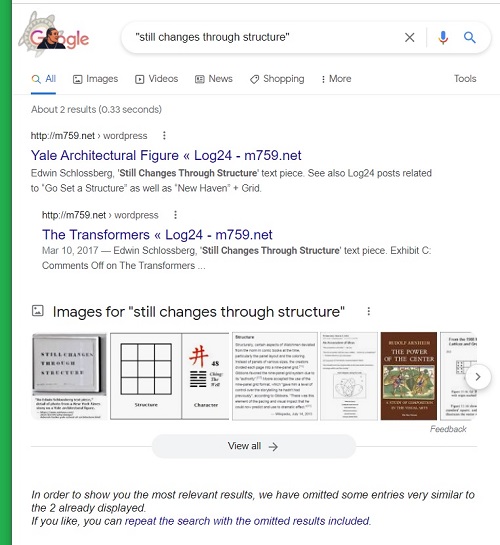




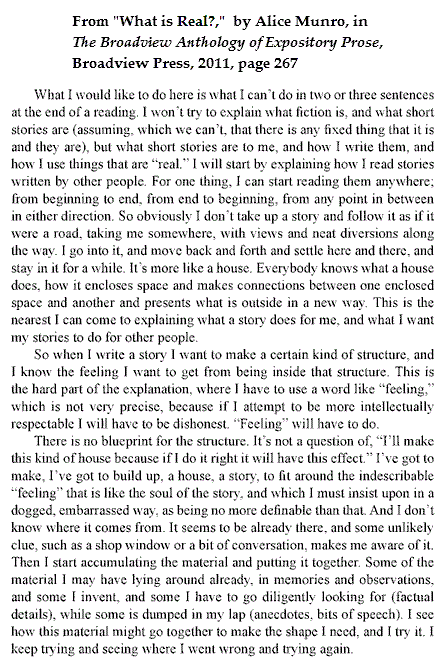


























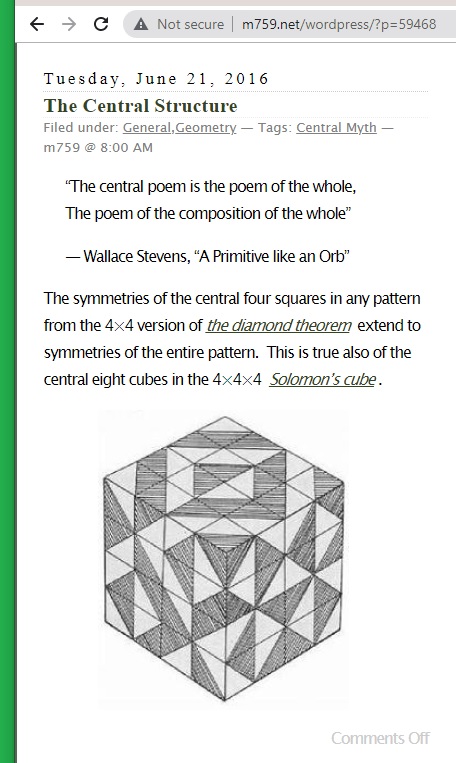

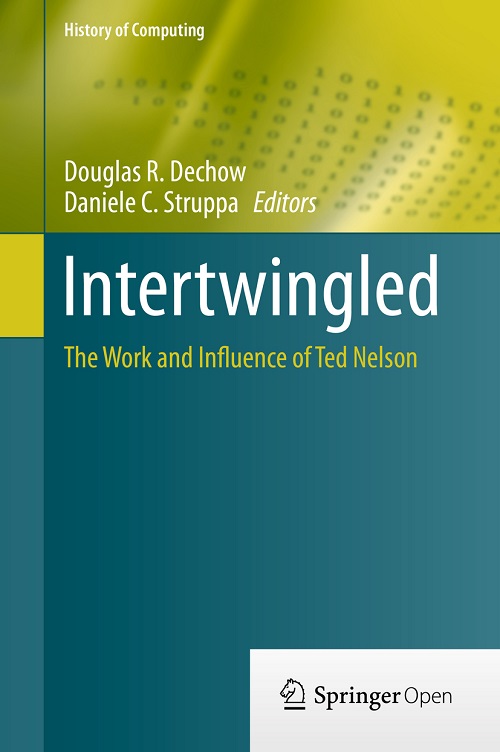

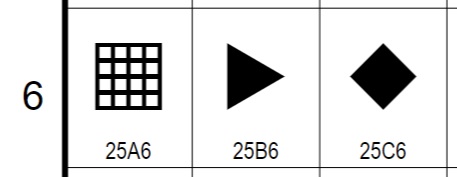






















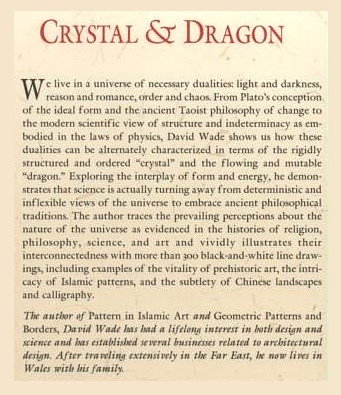



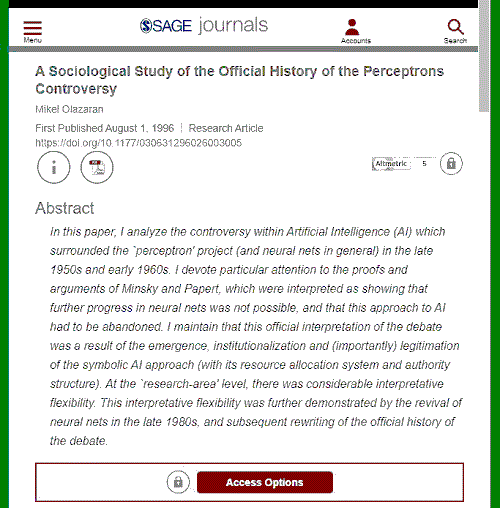



































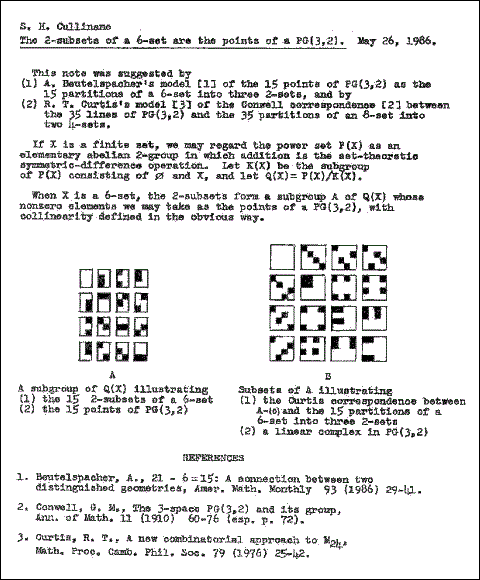






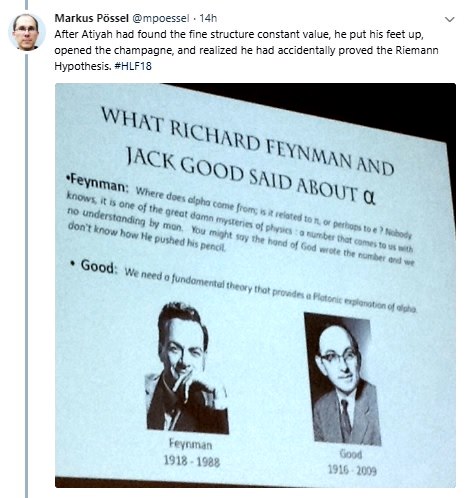





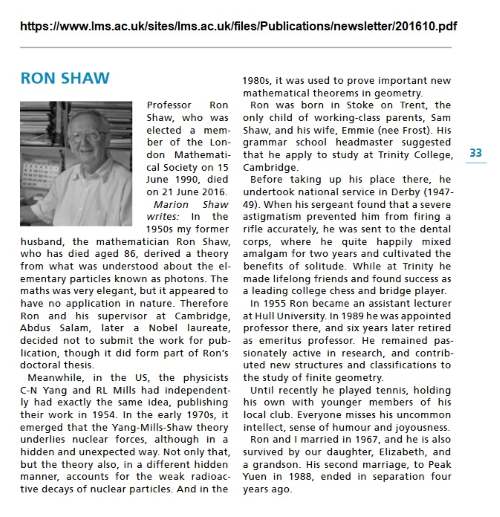
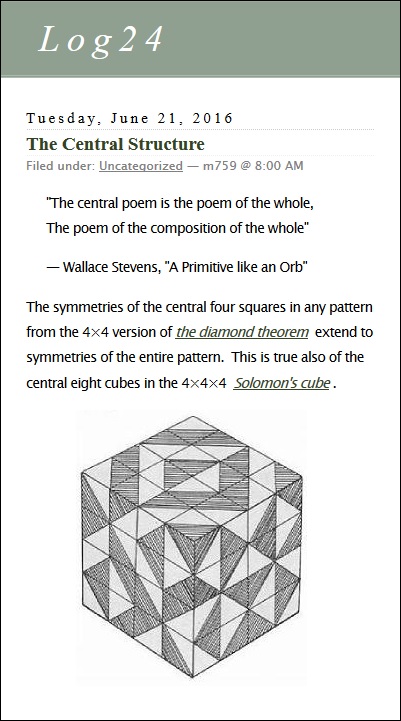


.gif)

